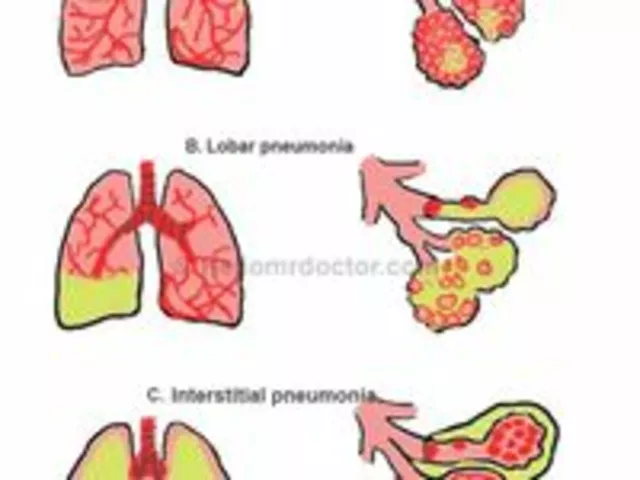TL;DR
- Albendazole does not reliably kill Schistosoma worms. Praziquantel is the frontline drug for schistosomiasis.
- Albendazole still helps control programs by clearing soil-transmitted helminths (STH) that commonly co-infect, cutting anemia and morbidity.
- Co-administering albendazole with praziquantel in mass drug administration (MDA) is safe, efficient, and endorsed by WHO when both STH and schisto are endemic.
- Use school-based delivery, simple dosing, and tight adverse-event monitoring to hit high coverage without overloading teams.
- Track impact beyond prevalence: anemia, hematuria, egg counts, school attendance, and coverage quality give the true picture.
What albendazole does-and doesn’t-against schistosomiasis
Here’s the straight answer people keep Googling: albendazole isn’t a schistosomiasis medicine. It’s excellent for soil-transmitted helminths (hookworm, Ascaris, Trichuris) but doesn’t reliably clear adult Schistosoma mansoni, S. haematobium, or S. japonicum. The drug that actually works against adult schistosomes is praziquantel.
That said, if you’re running a control program or planning an MDA round, albendazole still earns its place. Why? Because in most endemic areas, schistosomiasis and STH pile onto the same kids and adults. Treating both infections together lowers total worm burden, reduces anemia and abdominal pain, and helps students feel well enough to show up at school and learn.
How sure are we about that split of roles? The World Health Organization’s schistosomiasis guidance and the broader NTD Road Map (2021-2030) are crystal clear: praziquantel is for schistosomiasis; albendazole (or mebendazole) is for STH. Co-administer when epidemiology says both are a problem. Large field programs and safety studies back co-delivery.
Practical rule of thumb: if you’re treating schisto, ask one question-are STH common here too? If yes, add albendazole. You’ll improve health outcomes without extra community mobilization costs.
So no, albendazole isn’t a stealth schisto killer. It’s the reliable sidekick that takes out the co-infections driving anemia, malnutrition, and fatigue-the stuff that makes schisto hit harder.
Why albendazole still matters in schisto control: co-infections, anemia, and integrated MDA
Schistosomiasis and STH share a lot of geography. Lakes, rivers, irrigation canals-these are schisto hot spots. Surrounding villages often have poor sanitation, which keeps STH transmission high. It’s common to see kids with both schisto and hookworm. One causes blood loss in urine or stools; the other steals iron and causes chronic intestinal bleeding. No surprise anemia rates stay stubbornly high in those districts.
Albendazole fixes a big piece of that. A single 400 mg dose (200 mg for some younger children per national guidance) knocks down hookworm, Ascaris, and Trichuris. Multiple rounds per year, especially in schools, push infection intensity down. Co-administered with praziquantel (40 mg/kg for schisto), you hit the two most common helminth clusters in one sweep. That’s why ministries often budget for joint “deworming days.” It saves time, travel, and staff fatigue while delivering better health gains.
What do you actually gain in a schisto-focused program by adding albendazole?
- Less anemia: Hookworm and Trichuris removal mean fewer kids walking around exhausted and pale. Trials and program evaluations repeatedly show hemoglobin improvements after deworming campaigns that include albendazole.
- Lower morbidity: Abdominal pain, diarrhea, and poor appetite ease up as STH loads fall. That pairs nicely with praziquantel’s quick impact on schisto-related symptoms.
- Sharper school attendance and cognition: When worms stop draining energy, kids can focus. Governments don’t run MDA for test scores, but teachers will tell you the difference.
- Operational efficiency: One community meeting, one set of registers, one day off work or school. That’s a big deal for coverage.
There’s also a safety and logistics advantage. Albendazole’s dosing is simple, and it doesn’t require weight-based calculations or a dosing pole. Praziquantel dosing is weight-based (often delivered with a height pole), so pairing the two doesn’t complicate delivery much. You can train drug distributors to give both in minutes.
WHO has endorsed co-administration of praziquantel with albendazole in places with both schisto and STH. Large post-MDA safety reviews-from school-based campaigns in East Africa to community-wide rounds in West Africa-report predictable, short-lived side effects: nausea, abdominal discomfort, dizziness. They’re typically milder when kids eat beforehand, and when distributors explain what to expect.
Still, be clear-eyed about limits. Albendazole isn’t going to solve persistent schisto hotspots caused by heavy exposure-like kids swimming daily in irrigation canals-or snail-infested shorelines. For that you need water, sanitation, hygiene (WASH) improvements, behavior change (safe play areas, safe water access), and snail control where appropriate. Albendazole helps you buy time and reduce suffering while those infrastructure pieces catch up.

How to deploy albendazole with praziquantel: a simple, reliable playbook
Most readers clicking a headline like this want the how-to. Here’s a practical, field-tested approach that program managers and partners use.
Map risk and set targets
- Use recent surveys or routine data to map schisto and STH at the smallest operational unit you can manage (district, sub-district, school catchments).
- Group areas by risk level (high/moderate/low) using WHO cutoffs. High schisto + high STH = joint MDA priority.
- Agree on who gets treated: school-age children are the backbone; many countries now include preschoolers and high-risk adults (fisherfolk, irrigation workers) per national guidelines.
Pick dosing and frequency
- Praziquantel: 40 mg/kg in a single dose (height pole simplifies this).
- Albendazole: 400 mg single dose for STH, frequency based on STH endemicity (once or twice yearly; follow national policy).
- Schedule co-delivery where calendars overlap. If schisto is once yearly and STH is twice yearly, co-deliver once and deliver a second albendazole-only round later.
Train for co-administration
- Keep messages tight: “Two medicines today-one for bilharzia, one for stomach worms.”
- Explain expected side effects and the “eat first” tip to reduce nausea.
- Practice dosing with a height pole for praziquantel; albendazole is one tablet for most older children and adults.
Prepare sites and supplies
- Stock both medicines, clean water for swallowing, a snack plan if feasible (local partners often provide biscuits or porridge).
- Have separate tally sheets for each drug to track uptake; this helps coverage analysis.
- Set up a simple adverse-event action plan (shade, oral rehydration, transport referral if needed).
Deliver and debrief
- Use schools for speed and reach; add community posts to catch out-of-school kids and adults.
- Record coverage by age and sex where possible. The two numbers that matter most: proportion treated among the target population, and proportion of schools/communities reaching at least 75% coverage.
- Debrief with teachers and community health workers within a week. Fix what slowed you down before the next round.
Want to keep things simple for your team? Use the 80-15-5 rule:
- 80% of your effort goes to mobilizing families and schools (posters, radio, town criers, WhatsApp groups).
- 15% to logistics (medicines, registers, snacks).
- 5% to troubleshooting on the day (queuing, fainting, mis-dosing).
Now for a quick role comparison to keep the story straight during training:
- Praziquantel: kills adult schistosomes fast; weight/height-based dosing; may cause dizziness and nausea, especially on an empty stomach.
- Albendazole: clears STH; single 400 mg dose for most recipients; minimal dosing complexity; mild GI side effects.
- Both together: safe and efficient where both diseases are endemic. The combo cuts anemia and belly symptoms while praziquantel hits schisto.
What about mebendazole? Many countries use it for STH too. Albendazole tends to perform better against hookworm; mebendazole can be comparable for Ascaris. If hookworm is common-and anemia is a big problem-albendazole is usually preferred.
Evidence, safety nuances, pitfalls to avoid, and quick tools you can use
People want to know if the combo is truly safe and worth the hassle. The short version: yes, with common-sense guardrails.
Evidence snapshot (authoritative sources you can look up):
- WHO guidelines on schistosomiasis and STH prevention recommend co-administering praziquantel and albendazole in co-endemic areas.
- Program reviews from East and West Africa show consistent safety with co-delivery, with transient adverse events-nausea, abdominal discomfort, headache-more common right after dosing and among heavily infected recipients.
- Systematic reviews and pragmatic trials report hemoglobin gains and improved growth markers after repeated deworming in STH-endemic areas, especially where hookworm is common.
Safety nuances that matter in the field:
- Feeding first reduces side effects. A biscuit costs cents and prevents a lot of dizziness and vomiting.
- Pregnancy: Albendazole is generally avoided in the first trimester; national policies vary for later pregnancy. Praziquantel is considered safe in pregnancy and lactation by WHO, but some countries still prefer to defer in first trimester. Train distributors to ask and refer to local guidelines.
- Very young children: Dosing and eligibility differ by age and national policy. Avoid choking hazards-crush tablets as required and mix with a little water or food per guidelines.
- Drug interactions: Routine MDA co-delivery with praziquantel is fine. Albendazole is also used in lymphatic filariasis programs (often with ivermectin or DEC), but always follow the country plan to avoid double-dosing errors when campaigns overlap.
Pitfalls to avoid when you combine albendazole with praziquantel:
- Mixed messages: If teachers say “this is for bilharzia” and health workers say “this is for stomach worms,” parents may think their child doesn’t need one of them. Stick with a single, clear script.
- Missed populations: Out-of-school children and mobile workers (fisherfolk, farmers on seasonal migration) are often under-treated. Add community posts or weekend sessions.
- Coverage illusions: Counting tablets distributed isn’t the same as people treated. Use denominator data that’s updated, not last year’s estimates.
- Hotspot complacency: If infection stays high in the same villages, don’t just repeat the same delivery. Add outreach, adjust timing (e.g., after harvest when people are home), and work with WASH partners. Consider snail control where national policy allows.
Quick comparison cheat-sheet you can paste into training slides:
- Goal: reduce schisto morbidity (praziquantel) + reduce STH burden/anemia (albendazole).
- Dosing: praziquantel 40 mg/kg; albendazole 400 mg single dose.
- Side effects: both can cause GI upset; reduce risk with food and hydration.
- Eligibility: follow national guidelines; first-trimester pregnancy often excluded for albendazole.
- Metrics: coverage (≥75%), anemia rate, hematuria/microhematuria, egg counts, school attendance.
Examples from the field that show how albendazole helps schisto control without directly killing schistosomes:
- School-based campaigns in East Africa reported fewer clinic visits for abdominal pain and better hemoglobin scores after adding albendazole to praziquantel rounds. Teachers noticed better attendance within weeks.
- Community-wide MDA in fishing villages reduced visible hematuria with praziquantel while albendazole brought hookworm down-anemia improved more when both drugs were given together compared with praziquantel alone.
How do you know it’s working?
- Short term: fewer immediate side-effect complaints after adopting a “feed first” rule; high same-day uptake; good stock reconciliation.
- Medium term: lower stool/urine egg counts in sentinel sites; reduced microhematuria in school screening; rising hemoglobin in routine checks.
- Long term: fewer heavy-intensity infections, fewer anemia referrals, and fewer missed school days during MDA weeks.
Mini-FAQ
- Does albendazole treat schistosomiasis? Not effectively. It’s for soil-transmitted helminths. Schistosomiasis needs praziquantel.
- So why give albendazole at all? To cut STH co-infections that worsen anemia and morbidity. That makes schisto control stronger and communities healthier.
- Is co-administration safe? Yes, WHO-endorsed where both diseases are endemic. Expect mild, short-lived side effects. Feed first to reduce nausea.
- Can I replace praziquantel with albendazole if PZQ is out of stock? No. If PZQ is unavailable, you can still run an STH round with albendazole, but you haven’t treated schistosomiasis.
- Mebendazole vs albendazole? Both fight STH. Albendazole tends to be stronger against hookworm, which is tightly linked to anemia, so it’s often preferred where hookworm dominates.
Next steps and troubleshooting for your role
- Program managers: Align schisto and STH calendars so at least one round a year is co-delivered. Preposition snacks and water at dosing points. Use a two-minute script and stick to it.
- District clinicians: Brief your teams on expected adverse events and simple management. Encourage food before dosing and hydration during MDA days. Keep a light touch on referrals but take dizziness and vomiting seriously when prolonged.
- Teachers and community health workers: Count who actually swallowed each drug. Note absent students and follow up within a week. Use simple, local-language explanations-no mixed messages.
- Policy leads: Budget for combined rounds in co-endemic districts. Measure more than prevalence-track anemia, microhematuria, and heavy-intensity infections. Incentivize reaching out-of-school kids.
Field checklist you can print
- Are both schisto and STH endemic here? If yes, co-administer praziquantel and albendazole.
- Have you finalized dosing tools (height pole), tablets, clean water, cups, and a snack plan?
- Is the script consistent across teachers, health workers, and community leaders?
- Do you have separate tally sheets for each drug and a plan to find absent kids?
- Is there a quick adverse-event protocol posted at each site?
Bottom line: albendazole doesn’t knock out schistosomes, and it’s not meant to. It makes schisto control bite harder by clearing co-infections, lifting hemoglobin, and letting praziquantel do its job while kids actually feel well. In a world where budgets, staff, and attention are always tight, that sort of quiet leverage is exactly what programs need.
For anyone health-obsessed like me-even from a place like Melbourne where schisto isn’t on the doorstep-the integrated approach just makes sense. When you chase one parasite in isolation, you miss the mess of reality. When you treat what people really live with-multiple worms, weak appetites, school days lost-you start winning. Albendazole is how schisto programs keep that promise without asking families to stand in line twice.
One last SEO-friendly reminder for the geeks keeping score: the star of the show remains praziquantel. Albendazole is the co-star delivering the anemia and attendance wins. Put them together in co-endemic settings, and your schistosomiasis control metrics will trend the way you want them to.







suresh mishra
Make sure you match the albendazole dosage to the local hookworm prevalence for best anemia reduction.
Reynolds Boone
Wow, this guide nails the practical side of integrated deworming! The step‑by‑step playbook makes it feel like you could roll out a campaign tomorrow. I love the emphasis on feeding kids first – it cuts down nausea like a charm. Also, the 80‑15‑5 rule is a neat way to keep the team focused without getting lost in bureaucracy.
Angelina Wong
Great points, Reynolds – especially the feeding tip. In my experience, a simple biscuit or a piece of fruit can turn a shaky dosing day into a smooth one. Also, don’t forget to log side‑effects separately for each drug; it helps when you need to report to the health ministry.
Anthony Burchell
Co‑administration sounds tidy, but it can mask real problems. If you push both pills together, you might miss adverse reactions that are actually due to one drug. Better to monitor praziquantel and albendazole separately whenever possible.
Michelle Thibodeau
Reading through this, I’m reminded of the countless mornings spent in rural schools, watching children line up with hopeful eyes. The reality is that a single tablet of albendazole can lift a weight that’s been pressing down on a child’s chest for months, especially when hookworm is gnawing away at iron stores. When that burden eases, it’s not just about higher hemoglobin – it’s about quieter classrooms, teachers not having to repeat lessons, and families noticing their kids return home with more energy. One of the most striking observations from the East African pilots was the sudden jump in attendance after the first combined round, as if a collective sigh had been released. It’s also fascinating how a simple logistical tweak, like placing a plate of biscuits near the dosing station, can reduce dizziness by a measurable margin. The data on micro‑hematuria dropping alongside hookworm prevalence is a clear sign that we’re attacking the problem from both ends – the parasite and the symptom. Moreover, the safety profile remains reassuring; most side‑effects are mild and short‑lived, especially when nutrition is addressed beforehand. As we push for more ambitious targets in the NTD Road Map, these low‑cost, high‑impact interventions become the backbone of sustainable control. The synergy between praziquantel’s rapid schisto kill and albendazole’s steady STH clearance creates an environment where children can actually thrive, not just survive. In the grand scheme, this integrated approach mirrors the One Health philosophy: treating the whole ecosystem of infection rather than a single pathogen. It also frees up health workers’ time, allowing them to focus on WASH initiatives and community education. Lastly, the inclusion of clear metrics – like tracking anemia rates and school performance – ensures that programs can demonstrate tangible benefits to donors and policymakers alike. All in all, albendazole may not be the hero we imagined against schistosomiasis, but it’s undeniably the steadfast sidekick that makes the whole story possible.
Patrick Fithen
That long‑winded piece really paints a vivid picture It shows how small actions ripple through whole communities The philosophy behind integrated MDA reminds us that health is a tapestry woven from many threads
Michael Leaño
I hear you, Patrick – the big picture is powerful. It’s encouraging to see all these pieces fitting together for real change. Keep the optimism flowing, the next round will be even smoother.